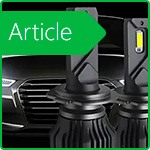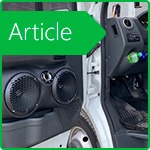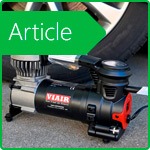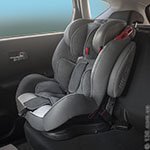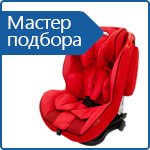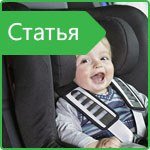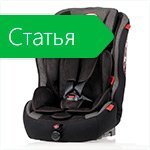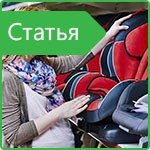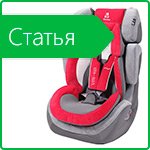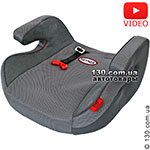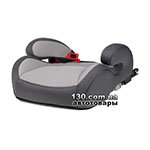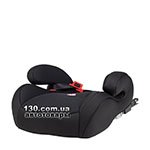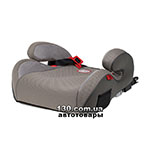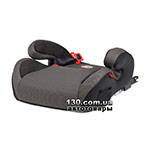
How to choose a baby car seat
When choosing a baby car seat, you need to pay attention to such details as the car seat group, car seat type and method of attaching a child seat.
The universality of the car seat depends on the group, i.e. the range of weight and age of the child, permissible for a particular type of car seat. For example, in the chairs of group 0/0 + you can transport children weighing up to 13 kg and up to 15 months of age, and chairs of group I-II-III are suitable for children weighing from 9 to 36 kg and age from 9 months to 12 years.
Car Seat Type
To select a child car seat based on its type, click on the appropriate image.
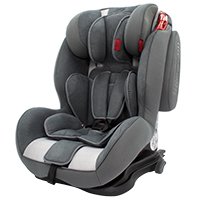
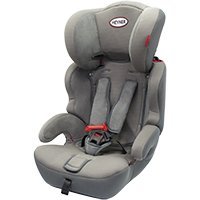
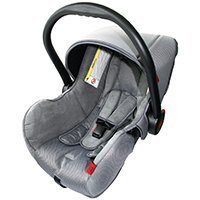
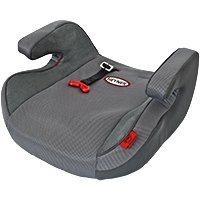
Car Seat Groups
Click on the corresponding group field to view all the seats in this group.
|
09 kg10 kg13 kg15 kg18 kg36 kg 09 monthes15 monthes3 years4 years12 years
|
More information about children's car seats
Properly selected child car seats can provide comfort and convenience even on the longest trip, and, both for the child and for the parents.
There are several types of car seats, depending on the age and weight of the child. According to the Standard of Nations ECE R44/04, they are divided into 4 groups: 0–3. Many car seats are combined in large groups 1, 2 and 3.
Group 0/0 + (carrycot)-is a portable cradle that is designed for children weighing up to 13 kg and up to 15 months old. The seat has a bowl-shaped body, internal five-point belts and a comfortable handle for carrying the baby. The car seat is installed facing the vehicle in motion.
Child car seats groups 0/0 +/I are intended for children from birth to 4 years old or up to 18 kg. The car seats in this group include both Car seats, cradles, and regular car seats with and without base.
The chairs of group I are designed for children weighing from 9 to 18 kg and aged from 9 months to 4 years. These car seats have five-point seat belts with soft shoulder pads. Most of the 1st group car seats have the ability to adjust the backrest tilt. Chairs with a base and the ability to adjust the backrest can be attributed either to the 1st group or to the 1-2-3 group. The latter have five-point belts and are more versatile.
Car Seats Group I-II are designed for children weighing from 9 to 25 kg and ages from 9 months to 6 years. Car seats with base are car seats of this group.
Car Seat Group 2 are designed for a child's weight from 15 kg to 25 kg, approximately from 4 to 6 years. Children's car seats of group 3 are designed for weight from 22 kg to 36 kg and age from 4 to 12 years. Car seats groups 2 and 3 are not too common. More common car seats united groups II-III. The combined chair group II-III includes chairs without a base and without five-point belts. They are designed for children weighing from 15 to 36 kg and age from 3 to 12 years.
Most universal car seats belong to the combined group I-II-III . They are designed for weight from 9 kg to 36 kg, and age from 9 months to 12 years. They are equipped with five-point seat belts. These chairs are comfortable because as the child grows, they grow with it. Over time, the chair can be turned into a booster by disconnecting the backrest. This group may include both ordinary child car seats and chairs with a base.
Types of child car seat mounts
To select a chair by mounting type, click on the corresponding icon.
More information about fastener types
Today, there are two main types of child seat anchorage in the car-standard car seat belts and chairs with the Isofix attachment system.
1. Fastening a child car seat with regular seat belts of a car can be divided into two types:
- - the child car seat is fixed with a car seat belt and the child is secured in it using three or five-point seat belts;
- - the child along with the child car seat is fixed to the car seat with the help of a regular seat belt.
2. The main feature of ISOFIX is to mount the seat without regular seat belts. Installation is carried out using special built-in locks on sliding runners and metal hinges, which are located in the car seat and are rigidly connected to the body.
For more information about mounting, see the article “ISOFIX child car seat (isofix). What is this? "
Materials on the topic
Baby car seats and boosters: Best Sellers

Stay tuned for updates!
Subscribe to our Telegram channel and be the first to receive useful materials.
Subscribe









